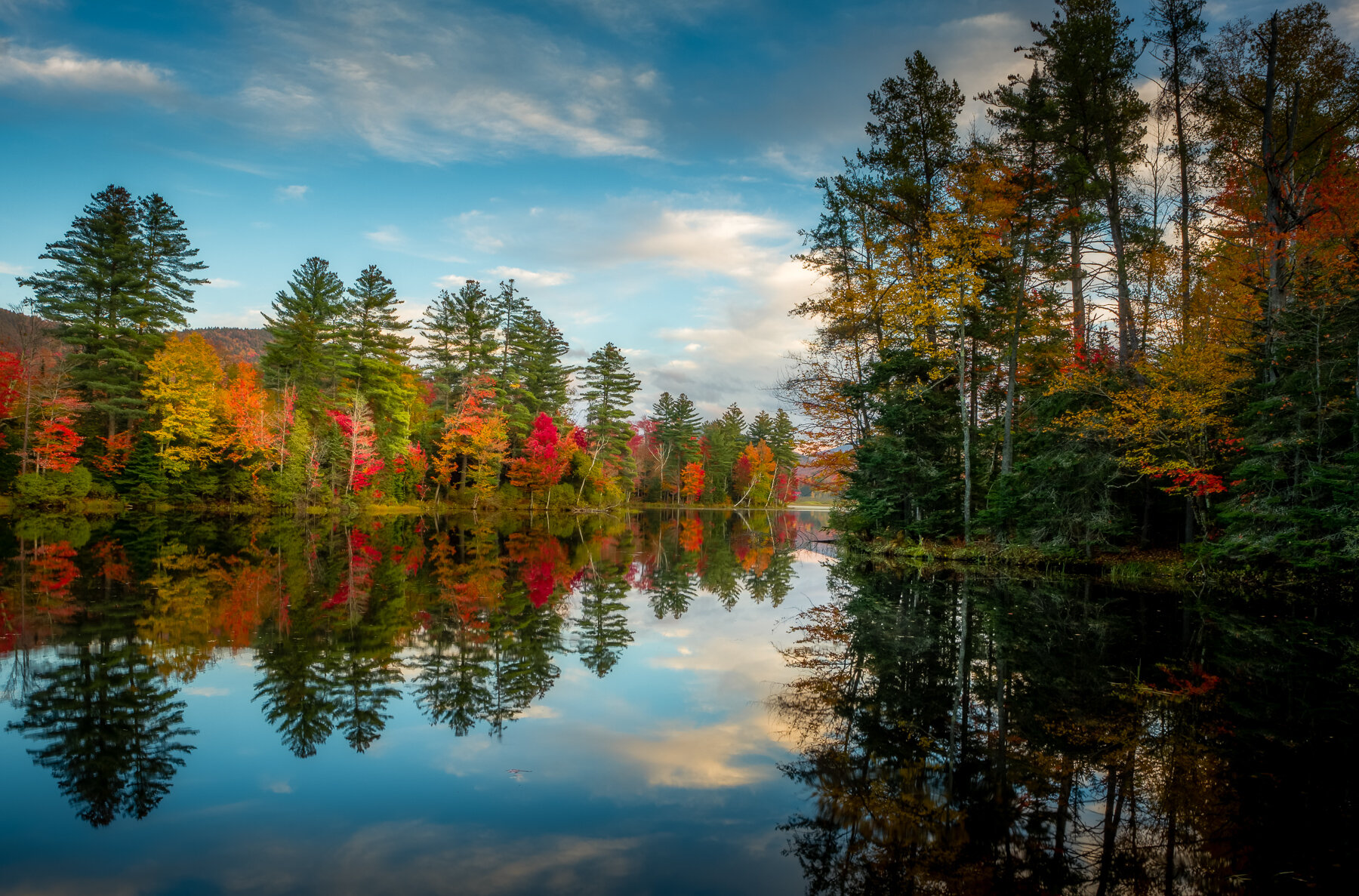Vermont’s Chittenden Reservoir
The Green Mountain National Forest is home to many lakes, streams, and rivers. None of them are more popular and scenic than the Chittenden Reservoir. The reservoir is located between Killington town to the east, Pittsfield to the north, and one of Vermont’s largest towns, Rutland to the west, and surrounded completely by the Green Mountain National Forest. The Reservoir spreads across 792 acres and reaches 1495 feet at its highest elevation. Lefferts Pond, which lies connected to the southern end of the reservoir, scans 49 acres, including its large wetlands. The reservoir is home to the Chittenden Dam. The dam was constructed in 1900 and is currently managed by the Green Mountain Power Company. The entire area with its two bodies of water and extensive hiking trail system is popular with outdoor enthusiasts. Both Locals and out-of-state travelers use this area for recreation regularly.
Along with Kayakers, Hikers, and fishermen, photographers also head to this spot in all seasons for some of the best scenery in Vermont. The reservoir and Lefferts Pond are surrounded by the green mountains and offer excellent views of Killington and Pico’s ski mountains. The trail system offers access and views in all directions. The woodlands are vast and thick with a few streams and a small waterfall. Horseback riding and camping are allowed in designated areas.
The photography opportunities are quite extensive, especially for those willing to do a little hiking and get your feet wet. Photographers can find plenty of subjects here in all four seasons. The area receives roughly 83 inches of snowfall each winter, and both bodies of water freeze totally for months. The winter months require a bit more hiking as the small parking area for Lefferts Pond is closed for the season. Roughly an extra half mile, but it’s flat and easy. The photo opportunities span the entire day; however, you can not view the sun on the horizon during sunrise or sunset because of the surrounding mountains. This does not mean there are no opportunities at these times, just the opposite, there are plenty. I find Lefferts Pond is best in the early morning light, and the Reservoir is best just before sunset. Both are excellent in Blue hours.
The Spring offers greening of the woodlands and the surrounding mountains. The ice and snowmelt make for an ample flow of water. In late spring, the local flora starts to bloom in earnest, and the local wildlife becomes more active. The bird photography opportunities in this area are excellent. The area is home to much wildlife, including all the traditional woodland creatures. You can get lucky and spot a bear or moose; however, since this area is popular with people, they tend to stay more hidden, but you can get lucky. Bring lots of bug spray in the Spring and Summer; it can get pretty bad.
The summer offers sunny hot days and cool calm evenings. This area still provides lots of misty mornings and clear starry evenings. There is little ground light so night photography and Milky Way night photography works well. The Reservoir has a perfectly situated small island in the middle that makes for excellent foreground subject matter with the green mountains as a background. The summer evening skies around sunset are always colorful with excellent reflections provided by the still waters. The summer months offer some additional compositions that the other seasons do not since you are more able to venture into the waters for more pleasing angles. The Reservoir offers more easy access to wading than Lefferts Pond.
Autumn is spectacular in this area (like the rest of Vermont). The autumn colors are spectacular, the reflections are vast and sharp, and there seems to be mist and fog almost every morning. You could spend weeks here in the autumn and never run out of subject matter. This is one of the most popular locations in the State for photographing fall foliage. However, you can still have most of the area to yourself if you arrive before sunrise and during a weekday. The woodlands are loaded with Maple trees and plenty of White Birches. Generally, the area reaches peak foliage the first week of October and can easily last for two weeks if the weather cooperates. I find that mornings work best at this time of year. Try to arrive an hour before sunrise and head for Lefferts pond first. The pond compositions work best, starting a half hour before sunrise till roughly an hour after, depending on the mist and fog. At this point, you would now focus your efforts on the Reservoir. The morning sunlight as it melts off the fog layer revealing autumn explosions of color and mountains in the background can be stunning.
You can use most of your photographic equipment here, but I find I use my wide-angle lens and my telephoto lens the most. My most used focal lengths are between 15mm – 30mm and 200mm and higher. I don’t find much use for focal lengths in-between, but those married to their 24-70mm lens will do just fine. Slow shutter speeds in low light are common, so a tripod is a must. A polarizing filter is also recommended. Any other piece of equipment you feel you need you can bring, and you will find opportunities to use them.
If you find yourself in this area of Vermont plan on spending some time here with your camera or stop by to do some future scouting. You will not be disappointed.



